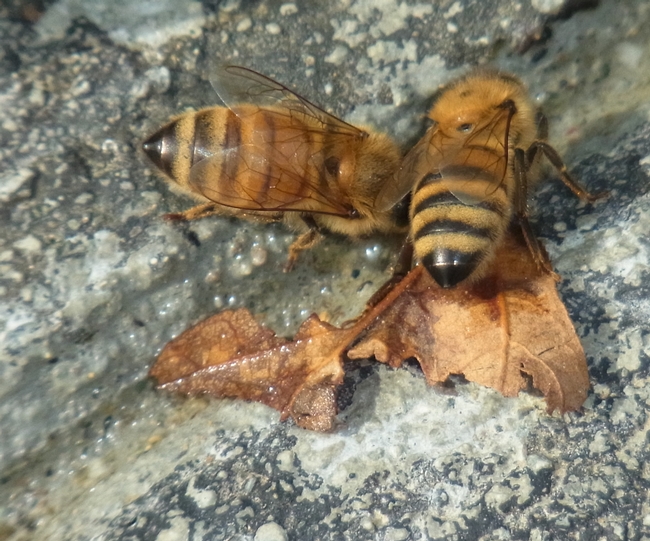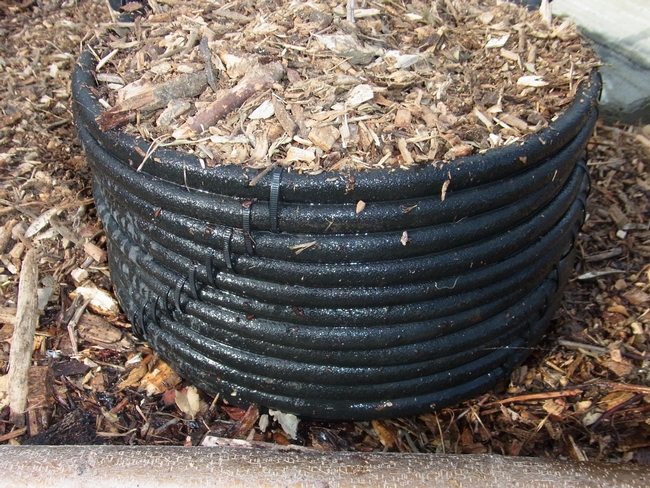Many insects can obtain the water they need from their food. Bees, however, need to drink water. Honey bees use water to make honey and to cool the hive.
As the weather heats up, I thought I'd review some ways to provide water for bees in the garden. This is especially important in this drought year, as some typical water sources such as leaking faucets may not be available. This is what commercial beekeepers do; their “bee board” is just a fancy name for a board leaning underneath a slowly dripping faucet. This can be recreated in a more water-conserving way by placing a board under the faucet of a rain barrel. Bee board under the slow drip from a rain barrel
A shallow bird bath with stones and corks for perching is a great bee water source in the home garden
Honey bees drinking at the Haven's custom watering stations. Notice that the girls don't stand in water while they drink.
This year I've added a water source to the garden made from old soaker hoses. The "beetainer" bee water source and planter made from a used soaker hose
Here's how it's done:
First step in the beetainer construction: make sure the faucet end faces out and use a zip-tie to attach the two rows
Next step: continue to attach each row to the one below with a zip-tie. Face the end of the zip-ties to the interior of the container.
The completed container. I left the zip-tie ends as shown since they did not interfere with planting






